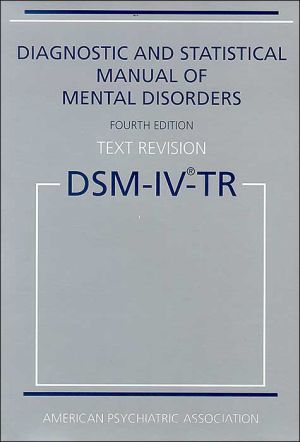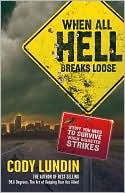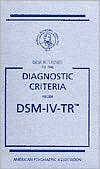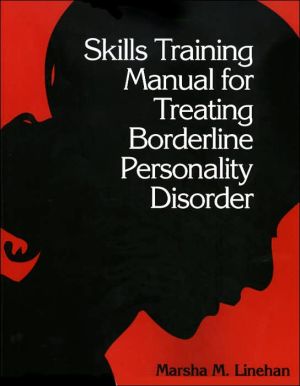Dialectical Behavior Therapy with Suicidal Adolescents
Filling a tremendous need, this highly practical book adapts the proven techniques of dialectical behavior therapy (DBT) to treatment of multiproblem adolescents at highest risk for suicidal behavior and self-injury. The authors are master clinicians who take the reader step by step through understanding and assessing severe emotional dysregulation in teens and implementing individual, family, and group-based interventions. Insightful guidance on everything from orientation to termination is...
Search in google:
Filling a tremendous need, this highly practical book adapts the proven techniques of dialectical behavior therapy (DBT) to treatment of multiproblem adolescents at highest risk for suicidal behavior and self-injury. The authors are master clinicians who take the reader step by step through understanding and assessing severe emotional dysregulation in teens and implementing individual, family, and group-based interventions. Insightful guidance on everything from orientation to termination is enlivened by case illustrations and sample dialogues. Appendices feature 30 mindfulness exercises as well as lecture notes and 12 reproducible handouts for "Walking the Middle Path," a completely new DBT skills training module for adolescents and their families. Doody Review Services Reviewer:Gary B Kaniuk, Psy.D.(Cermak Health Services)Description:This book applies the principles of dialectical behavior therapy to suicidal adolescents. It is a pragmatic approach to a high-risk population and the appendixes are full of exercises, handouts, and lecture points.Purpose:According to the authors, "this book focuses on treating those suicidal adolescents who exhibit multiple problem behaviors. The book definitely meets the authors' objectives.Audience:The authors target "the thousands of mental health professionals who, on a daily basis, are confronted with the challenging task of attempting to provide effective treatment for suicidal multiproblem adolescents." They continue, "this book belongs on the desks of a wide range of mental health practitioners, including clinical psychologists, psychiatrists, and clinical social workers. It may serve as a text in graduate-level courses and clinical practica." Dr. Miller, an associate professor at Montefiore Medical Center/Albert Einstein College of Medicine, has numerous publications and has conducted over 200 lectures and workshops on DBT. Dr. Rathus, an associate professor at Long Island University/C.W. Post Campus, has published numerous peer-reviewed articles and chapters on DBT, adolescent suicide, and other topics. Dr. Linehan, professor of psychology and adjunct professor of psychiatry and behavioral sciences at the University of Washington, developed DBT from CBT (cognitive behavioral therapy) while she was treating individuals with suicidal and self-injurious behaviors. Features:The first of the book's 12 splendid chapters introduces the problem of suicidal behavior in adolescents and provides a brief description of DBT. The other chapters then provide the framework and specifics of how to intervene. Chapter 8 on individual therapy is exemplifies the wonderful features of this book. It walks readers through a session, with illustrative figures and tables, as well as interesting case material. It is useful to both the novice and veteran therapist. I felt like I was receiving supervision on the application of DBT in the way the book is organized and written. Three appendixes are filled with exercises, lecture and discussion points, and handouts. This is a very readable and practical book, in the long tradition of therapeutic intervention volumes from Guilford Publications. Assessment:This is must reading for those working with an adolescent population. DBT is an effective strategy in attempting to address suicidal and parasuicidal behavior. The authors make it clear that the clients they are trying to help often have multiple problem behaviors. The book does not pretend that there are easy answers, but it does walk readers through this difficult process and provides hope, evident in the final statement of the last chapter: "Together, the efforts of the clinical and research communities will increase this treatment's ability to help suicidal, multiproblem adolescents build lives worth living."
Introduction 1Suicidal Behaviors in Adolescents: Who Is Most at Risk? 7What Do We Know about Effective Treatments for Suicidal Adolescents? 28Dialectical Behavior Therapy: Treatment Stages, Primary Targets, and Strategies 38DBT Program Structure: Functions and Modes 71Dialectical Dilemmas for Adolescents: Addressing Secondary Treatment Targets 96Assessing Adolescents: Suicide Risk, Diagnosis, and Treatment Feasibility 117Orienting Adolescents and Families to Treatment and Obtaining Commitment 130Individual Therapy with Adolescents 151Including Families in Treatment 187Skills Training with Adolescents 210Assessing Progress, Running a Graduate Group, and Terminating Treatment 245Program Issues 265Mindfulness Exercises for Adolescents 275Walking the Middle Path Skills: Lecture and Discussion Points 285Handouts for Walking the Middle Path Skills 303References 317Index 337
\ From The CriticsReviewer: Gary B Kaniuk, Psy.D.(Cermak Health Services)\ Description: This book applies the principles of dialectical behavior therapy to suicidal adolescents. It is a pragmatic approach to a high-risk population and the appendixes are full of exercises, handouts, and lecture points.\ Purpose: According to the authors, "this book focuses on treating those suicidal adolescents who exhibit multiple problem behaviors. The book definitely meets the authors' objectives.\ Audience: The authors target "the thousands of mental health professionals who, on a daily basis, are confronted with the challenging task of attempting to provide effective treatment for suicidal multiproblem adolescents." They continue, "this book belongs on the desks of a wide range of mental health practitioners, including clinical psychologists, psychiatrists, and clinical social workers. It may serve as a text in graduate-level courses and clinical practica." Dr. Miller, an associate professor at Montefiore Medical Center/Albert Einstein College of Medicine, has numerous publications and has conducted over 200 lectures and workshops on DBT. Dr. Rathus, an associate professor at Long Island University/C.W. Post Campus, has published numerous peer-reviewed articles and chapters on DBT, adolescent suicide, and other topics. Dr. Linehan, professor of psychology and adjunct professor of psychiatry and behavioral sciences at the University of Washington, developed DBT from CBT (cognitive behavioral therapy) while she was treating individuals with suicidal and self-injurious behaviors. \ Features: The first of the book's 12 splendid chapters introduces the problem of suicidal behavior in adolescents and provides a brief description of DBT. The other chapters then provide the framework and specifics of how to intervene. Chapter 8 on individual therapy is exemplifies the wonderful features of this book. It walks readers through a session, with illustrative figures and tables, as well as interesting case material. It is useful to both the novice and veteran therapist. I felt like I was receiving supervision on the application of DBT in the way the book is organized and written. Three appendixes are filled with exercises, lecture and discussion points, and handouts. This is a very readable and practical book, in the long tradition of therapeutic intervention volumes from Guilford Publications. \ Assessment: This is must reading for those working with an adolescent population. DBT is an effective strategy in attempting to address suicidal and parasuicidal behavior. The authors make it clear that the clients they are trying to help often have multiple problem behaviors. The book does not pretend that there are easy answers, but it does walk readers through this difficult process and provides hope, evident in the final statement of the last chapter: "Together, the efforts of the clinical and research communities will increase this treatment's ability to help suicidal, multiproblem adolescents build lives worth living."\ \ \ \ \ From the Publisher"An excellent, practical book on a very difficult-to-treat and neglected population: teens with multiple and severe psychiatric disorders, mood dysregulation, and recurrent suicidal and/or self-harming behaviors. This book is recommended for students, psychologists, social workers, psychiatric residents, psychiatrists, and other professionals dealing with mental health issues in teenagers. Also, this book is an outstanding resource for researchers evaluating the efficacy of Dialectical Behavior Therapy for teenagers."--Boris Birmaher MD, University of Pittsburgh Medical Center "This book is extremely relevant for therapists working with adolescents who engage in suicidal and other high-risk behaviors. In addition to providing an efficacious and easily understood manualized approach for this population, it offers many valuable tips for building a strong therapeutic alliance with this challenging population."--Lynn Ponton, MD, University of California, San Francisco "Outstanding. This book represents a major contribution to the prevention of adolescent suicide. It is extensively detailed to inform clinicians about the applications of this effective psychosocial treatment for adolescents who present with specific risk factors. Written by pioneering developers of DBT, this book is essential reading for mental health professionals at every level of experience and training."--Cynthia R. Pfeffer, MD, Department of Psychiatry, Weill Medical College of Cornell University "This long-awaited book offers the latest thinking on core elements of DBT while illustrating important strategies specific to treating adolescents. The authors' skill and expertise with this population shine, making this an essential manual for DBT practitioners and administrators working with adolescents."--Andre Ivanoff, PhD,Columbia University School of Social Work "Humane, practical, and erudite. The authors, through their dialectical approach, provide a theoretical framework that allows for an efficient, realistic, and parsimonious approach to the core difficulties in multiple health-risk behaviors in youth. Most important, they provide clear guidelines as to how therapists should conduct themselves to be maximally effective with these challenging adolescents, and how to cope with the emotional demands of work with this population. What the reader will learn is that DBT is more than a set of skills and techniques--it is a way of understanding and conceptualizing human behavior. This book should be read by every professional who works with multiproblem teens."--David A. Brent, MD, Division of Child and Adolescent Psychiatry and Services for Teens at Risk, University of Pittsburgh School of Medicine\ \ \ Journal of the American Academy of Child and Adolescent Psychiatry"Clinicians with and without expertise in dialectical behavior therapy (DBT) will find this book useful because it covers topics ranging from basic principles to details of session content, to treatment protocol modifications for this specialized population....The attention given to the role of families in this book is a feature that is not available in general DBT books....This book's greatest strength is the practical format in which information is presented. The chapters that outline treatment protocols provide detailed information about session process and content. Many practical figures, tables, and checklists are included. The addition of reproducible handouts and checklists that can actually be used in therapy is an added bonus. There is also an appendix of mindfulness exercises that most clinicians will find helpful....A comprehensive and practical book....This book will certainly help to facilitate future research because it provides the comprehensive structure necessary for those who will go on to conduct clinical trials."--Journal of the American Academy of Child and Adolescent Psychiatry\ \ \ \ \ Bulletin of the Menninger Clinic"This is an excellent manual covering how to apply DBT to multiproblem suicidal adolescents."--Bulletin of the Menninger Clinic\ \ \ \ \ Child & Family Behavior Therapy"This is an exciting and very important book that fills a need in the behavioral literature....The book is clearly written, full of examples and may represent the most comprehensive explanation of dialectical behavior therapy yet written. This book would be a valued addition to any advanced graduate level psychology or social work course in behavior therapy targeting adolescence or where suicidality is part of the curriculum. This book will also be a valued addition to any psychiatry residency or fellowship aligned with an adolescent treatment program. Given the importance of this book, its potential contribution and the high level of need of this targeted population, the price is a bargain!"--Child & Family Behavior Therapy\ \ \ \ \ Cognitive Behavioral Therapy Book Reviews"A remarkably well-written, comprehensive, theoretically-grounded, integrated treatment manual. It is excellent for researchers and clinicians alike—as the most comprehensive and empirically-informed approach to treating suicidal adolescents developed by experts with this population....Notable throughout this manual is the compassionate stance taken by the authors in describing the symptoms and behaviors of the multi-problem adolescents and families served by dialectical behavior therapy (DBT) treatment....I highly recommend this treatment manual for all those working with adolescents."--Cognitive Behavioral Therapy Book Reviews\ \ \ \ \ PsycCRITIQUES"This book is a creative synthesis of the new and old that offers a useful treatment manual to be applied and further tested with the taxing population of suicidal adolescents....An excellent work....The ideas and tools are well explained, inviting application, skill building, and ultimately analysis of the effectiveness of this approach. This work goes a long way toward moving us forward in treating this most taxing dilemma of treating suicidal adolescents. This is a nice synthesis. Well done."--PsycCRITIQUES\ \








